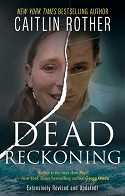 Synopsis:
Synopsis:
Carol Kennedy was a gentle-spirited artist, gifted teacher and therapist, and devoted mother to her daughters, Katie and Charlotte. For more than two decades, she remained a committed wife to Steven DeMocker, the man she genuinely believed was her soulmate. But Carol was codependent and incapable of establishing and maintaining healthy boundaries with Steve, repeatedly overlooking and making excuses for his numerous affairs and irresponsible spending habits. Steve was charming, charismatic, and manipulative. Eventually, however, Carol became empowered and found her voice. She divorced Steve and, though mired in debt, finally had a chance to establish a new life on her own terms.
Mere weeks after finalizing the divorce, Carol was speaking to her mother on the telephone. Suddenly, she exclaimed, “Oh, no!” Those were the last words anyone ever heard Carol utter. Her bloodied, bludgeoned body was discovered in her rural home, her skull broken in more than fifty places. From the outset, Steve was the prime suspect, but it would be more than five years before prosecutors would secure his conviction. The quest for justice was long, punctuated by bizarre, unpredictable complications and legal machinations, and controversy. Because even as Steven DeMocker serves a life sentence plus twenty-one years in an Arizona penitentiary (despite a complete lack of physical evidence conclusively tying him to the crime), many observers continue to debate whether he was capable of murdering the mother of his two daughters in such a brutal manner.
Review:

Employing her signature style, best-selling author Caitlin Rother chronicles the true story of Carol Kennedy and Steven DeMocker. Her tenth book is meticulously researched and packed with spellbinding details.
Then No One Can Have Her transports readers into the troubled marriage of Carol and Steve, both of whom were intelligent, attractive, athletic, educated. Steve was unfaithful to Carol practically from the outset, and even, a few years into the marriage, engaged in an affair with the midwife who delivered their child. Still, their dysfunctional union served them both. Carol seemed addicted to the turmoil, even bragging to her female friends about their sex life, often after Steve apologized, showered her with presents, and made promises they both knew he would never keep. The cycle repeated, but over the years, Steve’s behavior became increasingly disturbing and destructive, impacting others besides Carol. For instance, when Steve decided to leave academia and pursue a career as a financial adviser, his ruthless and unethical business practices severed his lifelong friendship with Sturgis Robinson. In retrospect, Robinson realized that the warning signs were always there and, in fact, he had, in the name of friendship, unwittingly enabled and empowered some of Steve’s most reprehensible conduct.
Steve’s destructive behavior spiraled increasingly out of control. His womanizing became more and more blatant. He failed to curtail his spending, even though his income was insufficient to support his lavish tastes and lifestyle that included trips, club memberships, and leased luxury vehicles for himself and his daughters. His average monthly expenditures included $1,500 on clothing, $800 for meals out, $500 on electronic equipment, and $160 on haircuts. By his own admission, he was $1.4 million in debt and regularly borrowing money from his parents to cover necessities. And there was the matter of the alimony Steve was obligated to pay Carol for several years.
Rother follows Carol’s journey from a woman completely unable to envision life without Steve to a place of empowerment and spiritual wisdom, achieved primarily through art, meditation, and her work as a therapist to women in recovery from, among other things, love/sex addiction. Carol finally found the strength to break out of the marriage and was steadfastly resisting Steve’s efforts to convince her to take him back. She had begun dating and, in order to ease the financial burden a bit, had rented a guesthouse on the property to Jim Knapp. She and Jim became good friends and confidantes, chatting each evening over a glass of wine. Knapp had his own catalogue of troubles, including a history of prescription drug addiction and cancer (melanoma) diagnosis, and posthumously became the focus of Steve’s defense strategy. Steve’s attorneys unsuccessfully attempted to convince the jury of his innocence by portraying Jim as her murderer.
Carol’s death was sudden and horrifying. Rother describes the numerous mistakes made by investigators employed in a quiet, affluent Arizona county where homicides simply didn’t occur. As a result, they had no opportunity to hone their investigative skills. Steve was always the focus of the investigation and, despite the fact that no physical evidence ever convincingly or conclusively linked him to the crime scene, he was eventually ordered to stand trial for Carol’s murder.
Steve’s motives, opportunity and the significant circumstantial evidence proffered by the prosecution are explored with detached precision by Rother, a former investigative reporter. The legal wrangling in this case was nothing short of epic, with accusations and allegations spawning separate investigations into the prosecution, as well as Steve’s first team of defense attorneys, and repeatedly delaying the trial. From his jail cell and with the assistance of his attorneys, Steve manipulated and connived his own daughters, parents, and siblings to aid and abet his astoundingly brash attempts to benefit from Carol’s death. With breathtaking but unembellished clarity, Rother recounts Steve’s determination to collect the proceeds from Carol’s life insurance policies as a means to fund his defense.
Ultimately, Rother crafts a tragic true story of two people who, because of their brokenness, squandered infinite opportunities to lead happy, productive lives. If, in fact, Steve DeMocker murdered Carol Kennedy, he did so in a fit of rage fueled by his desperation to solve his financial problems, narcissism, and addiction to controlling Carol.
Carol’s life was cut short just as she was taking advantage of the second chance she had manifested for herself. Shortly before her death, she was interviewed in conjunction with a retreat she attended to study Touch Drawing. Rother describes how Carol’s words impacted her and echo as the theme of Then No One Can Have Her.
Carole said she hoped that people could appreciate the “sense of wonder” and “mystery” that live in the quiet stillness” of their hearts, where they could “drop down in and tell the truth. At any moment any one of us can make achoice, but it’s a choice that has to be made, that I’m going to stop doing this other thing that I’ve been doing, and I’m going to choose the tell the truth now,” she said.
If only Carol had made the choice to “stop doing this other thing” that she had been doing sooner, perhaps she would still be alive. The whole truth will likely never be known — Steve will probably take the horrific details of that first Tuesday in July 2008 to his grave with him. Then No One Can Have Her is a testament to the spirit and essence of Carol Kennedy, a woman her best friend said would view this case with kindness and absolution. “Carol would forgive him. That sounds crazy, but I felt that from the start,” she opined. It is also Rother’s best work to date: engrossing, fascinating, emotionally gripping, and haunting.
Did Steven DeMocker brutally murder Carol Kennedy, his ex-wife and the mother of his two daughters? You decide.



















5 Comments
Pingback: Blog tour list for “Then No One Can Have Her” | just a girl, living, reading, watching, and writing
Pingback: Then No One Can Have Her by Caitlin Rother | just a girl, living, reading, watching, and writing
Pingback: Guest Post: The Back Story ~ Behind the Writing of Then No One Can Have Her | Colloquium
Pingback: Book Review: A Complicated Woman | Colloquium
Pingback: Guest Post: And Now For Something A Little Different | Colloquium